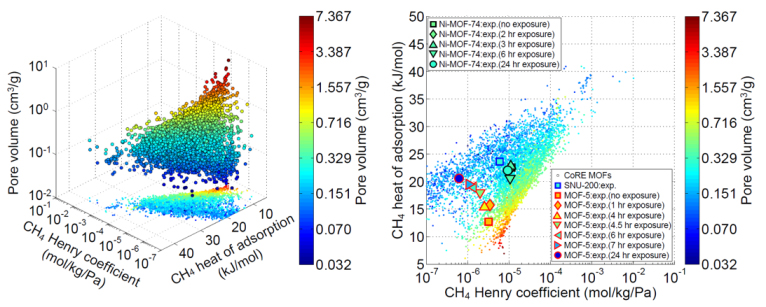As a research project of Saudi Aramco – KAIST CO2 Management Center, Prof. Jihan Kim from the Department of Chemical and Biomolecular Engineering at KAIST has worked with other co-workers to develop a new method to computationally model materials that have been degraded and are no longer crystalline. In general, computationally modelling amorphous materials is one of the biggest challenges facing the computational community. In this research project, the team found that it is possible to use “big data” to model these degraded materials indirectly, thereby opening up a new conceptual framework that can be extended to a variety of different applications.
To accomplish this, the team screened over 12,000 crystalline porous materials and computed methane adsorption properties. Next, a feature space map was created where various different properties were used as dimensions for the map. Finally, experimentally deformed MOFs as well MOFs deformed by exposing them to humid conditions were prepared and the resulting experimental points were placed on top of this map. From this analysis, the team realized that deformed MOFs share similar properties with their nearest neighbor crystalline materials. As such, the team succeeded in showing that one can choose the nearest MOFs and transfer the properties of these crystalline MOFs to the degraded ones, leading to a new way to obtain properties of materials whose structural information is lost. This work was published in Proceedings of National Academy of Sciences (PNAS) in 2017. The team continues to look for new materials that can capture CO2 from humid conditions as well as develop new models to account for humidity/degradation.


Prof. Jihan Kim (Department of Chemical and Biomolecular Engineering)
Homepage: http://molsim.kaist.ac.kr
E-mail: jihankim@kaist.ac.kr






